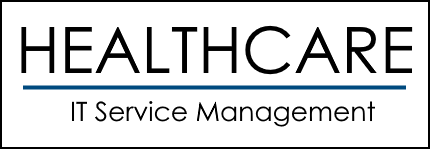In the increasingly digitized world of business, data is paramount. It supports daily operations, informs strategic decision-making, and helps maintain customer relationships. However, the digital landscape isn’t without threats. Everything from cyberattacks to natural disasters can potentially disrupt business operations and compromise data integrity. This is where disaster recovery (DR) and business continuity planning (BCP) play a crucial role, and an MSP can be your most trusted ally in this venture.
The main purpose of BCDR is to mitigate the impact of outages and disruptions on business operations. By implementing BCDR practices, organizations can effectively recover from issues, minimize the risk of data loss and damage to reputation, and enhance operations while reducing the likelihood of emergencies.
Why Disaster Recovery and Business Continuity Planning Are Essential
Imagine a scenario where your business experiences a significant data breach. Critical customer information is stolen, operations grind to a halt, and the trust you’ve worked so hard to earn from clients’ shatters. Such scenarios are avoidable, or at least manageable, through effective disaster recovery and business continuity planning.
A disaster recovery plan is a documented, structured approach detailing how to recover and restore IT infrastructure and operations following a disaster. It’s designed to limit the impact of disruptions and quickly restore functionality. On the other hand, business continuity planning focuses on the broader aspect of keeping essential business functions running during and after a disruption. It’s an all-encompassing strategy that touches every aspect of the business. This domain entails extensive strategic planning focused on addressing long-term obstacles to an organization’s prosperity.
Business continuity (BC) primarily concentrates on the organization, while disaster recovery (DR) specifically targets the technology infrastructure. The business continuity plan (BCP) includes contact details, change management protocols, instructions on plan utilization, detailed procedures, and a timetable for reviewing, testing, and revising. The disaster recovery plan (DRP) includes a concise overview of essential actions and contact details, the designated responsibilities of the DR team, criteria for utilizing the plan, the DR policy statement, plan objectives, steps for incident response and recovery, authentication tools, geographical risks, and plan background.
Organizations are influenced by the regulatory and compliance environment. For instance, hospitals and other covered entities are obligated to have an emergency mode operation plan as per the HIPAA Security Rule. Businesses may face pressure from customers to create effective BCDR plans. Evaluating an organization’s BCDR approach could be a crucial step in the screening process for potential clients.
Before activating the BCDR plan, organizations need to consider various factors. These include the estimated duration of the outage, the impact of the outage on the organization, the financial implications of implementing the BCDR plan, and the potential for the plan to cause further disruption.
Working without a DR or BCP is akin to walking a tightrope without a safety net. Any disruption, large or small, can have far-reaching impacts on your business, affecting productivity, revenue, and reputation. In today’s competitive business landscape, this could potentially mark the end of your enterprise. Effective business continuity and disaster recovery plans are explicit in assessing the diverse risks faced by the organization. They offer well-defined and practical measures to ensure resilience and recovery. These plans prioritize the safety of employees, facilities, and the organization’s brand. Additionally, they incorporate a robust communications strategy and provide a comprehensive roadmap from initiation to completion.
The MSP’s Role in Disaster Recovery and Business Continuity

An MSP acts as an outsourced department of your organization, managing various IT services, including disaster recovery and business continuity planning. Leveraging our deep understanding of IT systems and cybersecurity, MSPs offer services such as risk assessment, DR and BCP development, implementation, and regular testing of these plans. Through continuous monitoring, an MSP can identify and address potential issues before they escalate into full-blown disasters. They also ensure prompt response to minimize downtime and data loss in the face of disruptions, ensuring your business remains operational and resilient.
The MSP staff will assist you in assessing the entire plan to ensure that all significant milestones are identified. This includes milestones related to network connectivity, resources, infrastructure, storage, proof of concept, storage replication, recovery point objectives, testing, and backup data. Your managed IT services provider will not only help you develop a backup plan but also ensure that your employees are aware of their responsibilities in case of a disaster. The MSP team can assist you in analyzing the tasks in the BDR plan, assigning them to specific staff members, and creating a communication strategy for situations where the usual channels are unavailable.
When considering a detailed plan, it is important to address specific questions such as what needs to be done, how it will be done, why it is necessary, and most importantly, who will be involved. It is crucial to identify the necessary resources, individuals, and applications when asking these questions. We must also be prepared to determine the appropriate response to the situation and carry out the necessary steps and processes efficiently to minimize any potential harm.
Here are some questions we can ask:
- Who will participate in recovery and communication when your disaster recovery plan is implemented?
- What is the maximum amount of time your organization can tolerate being offline?
- What level of service agreement (SLA) is required for the business and users?
- What users do we need to recover first?
- What are the available tools to minimize risk and downtime in the environment?
- What is the method for segregating user networks from operational or business networks?
- How fast can data protection tools restore our operations?
- Is it possible for users to retrieve their data if an endpoint device is compromised?
- Is it possible to ascertain the exact time when the network or endpoint devices were initially affected by the ransomware?
- Can we prevent the spread of ransomware or malware across the network?
- Can we recover quickly to a specific point in time?
- Is it possible for our users to access their data from the cloud before it has been restored?
Understanding Different Types of Disaster Recovery Plans
There are several types of disaster recovery plans, each designed to address specific IT infrastructures and potential threats:
- Virtualized Disaster Recovery Plan- This approach relies on creating virtual versions (or clones) of important servers. In the event of a disaster, these virtual servers can be activated to restore functionality.
- Network Disaster Recovery Plan- Here, the focus is on recovering the network infrastructure — both hardware and software components. This includes servers, routers, switches, and data lines.
- Cloud-Based Disaster Recovery Plan- This involves storing and backing up data on cloud platforms. It offers flexibility, scalability, and rapid recovery as data can be accessed and recovered from virtually anywhere.
- Data Center Disaster Recovery Plan- This plan revolves around strategies to recover data center facilities and infrastructures. It’s particularly important for businesses that house their own IT infrastructure.
Your MSP can guide you in choosing the right type of disaster recovery plan based on your business needs, resources, and risk exposure.
Building a Disaster Recovery Plan: A Comprehensive Checklist

Creating a comprehensive disaster recovery plan involves several key steps:
- Risk Assessment- Identify potential threats to your IT infrastructure and the possible impact of these threats.
- Business Impact Analysis- Determine which systems, applications, and data are critical to your business operations and estimate the potential losses in case of their disruption.
- Strategy Selection-Based on the risk assessment and impact analysis, choose the most appropriate disaster recovery strategy (virtualized, network, cloud, or data center).
- Plan Documentation- Document every step, procedure, and responsibility within the plan. Include emergency contacts and vendor details.
- Implementation- Apply the plan across the organization. This includes installing necessary hardware, configuring systems, backing up data, and more.
- Testing- Regularly test the plan to ensure its effectiveness. Adjust and update the plan based on the results of these tests.
- Training- Educate your team about the plan. Make sure they understand their individual roles and responsibilities.
A Reliable MSP is Invaluable to Your Disaster Recovery Plan

In summary, the digitization of businesses has brought with it a new landscape of threats and vulnerabilities. Disaster recovery and business continuity planning is no longer a luxury, but an essential part of any modern business strategy. By partnering with a reliable MSP, you can ensure your business is resilient, able to quickly recover from any disruption, and maintain continuity in the face of uncertainty.
Interested in learning how Healthcare IT Service Management can help you with your Disaster Recovery and Business Continuity Plans?
Learn more about our Healthcare Managed IT Services and Packages or give us a call at 520-201-2330 when you’re ready to book a free consultation.

With over 16 years in the industry, Jameson Lee has honed his skills in IT management, project execution, and strategic planning. His ability to align technology initiatives with business goals has consistently delivered remarkable results for organizations across various sectors.
Jameson’s educational background includes an Associate of Applied Science degree in Computer Networking Systems, providing him with a solid foundation in technical concepts and best practices. Complementing his technical acumen, he has also completed coursework in Business Administration, equipping him with a well-rounded understanding of the operational aspects of running successful businesses.
Driven by a commitment to staying ahead of industry trends, Jameson actively pursues professional certifications and continuous learning opportunities. His credentials include CompTIA A+, N+, and Security+, along with MCP and MCTS certifications. This dedication ensures that he remains at the forefront of technological advancements, enabling him to offer innovative solutions to complex challenges.
What sets Jameson apart is his personable approach to working with clients. He believes in fostering strong relationships and effective communication, collaborating closely with stakeholders to understand their unique needs, and provide tailored technology solutions. By building trust and understanding, Jameson ensures that every project is aligned with the client’s vision and objectives.
Throughout his career, Jameson has successfully led teams and implemented robust frameworks to optimize performance and achieve remarkable technological initiatives. Whether it’s streamlining operations, enhancing cybersecurity measures, or implementing cutting-edge software solutions, Jameson has consistently delivered tangible outcomes for his clients.
As a trusted IT partner, Jameson’s mission is to empower businesses with technology solutions that drive growth, efficiency, and competitive advantage. With his expertise, dedication, and personable approach, Jameson Lee is the catalyst for transforming your business through the power of technology.

